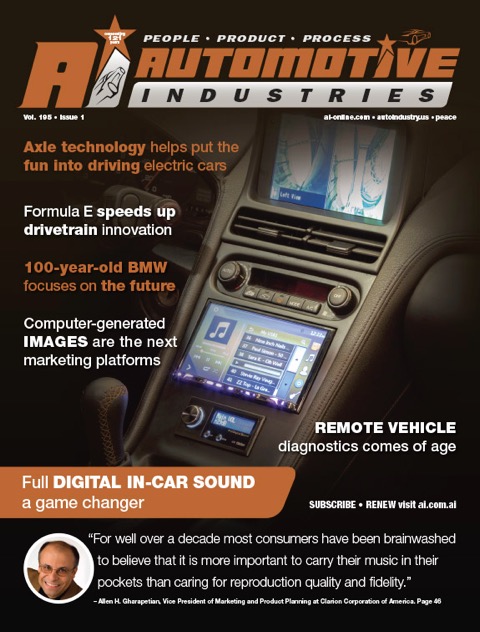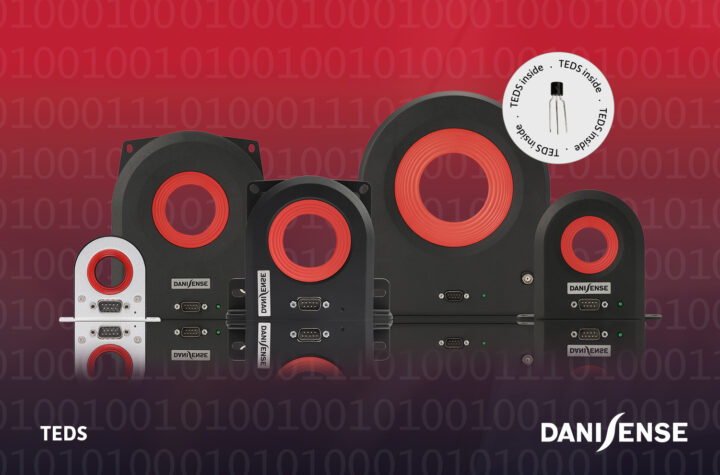
While nearly all music listened to in vehicles is digital, all car audio systems have been converting the digital signals into analog for amplification – until now.
Clarion Corporation of America has launched what it believes to be the industry’s first in-car audio system to maintain a digital audio signal from the source to the speaker voice coils, resulting in pristine sounding audio with zero loss in quality and no added noise from analog connections.
Featuring multiple custom-developed LSI chipsets, Clarion’s Full Digital Sound system is said to be the first audio system specifically designed for the automotive space capable of maintaining a 96kHz/24-Bit digital audio signal from the source to the speakers without ever converting it to analog or passing a signal through a traditional amplifier.
Automotive Industries (AI) asked Allen H. Gharapetian, Vice President of Marketing and Product Planning at Clarion Corporation of America, why it is important to have high-fidelity audio in a vehicle.
Gharapetian: Today, we are in an age of renaissance as far as audio is concerned. For well over a decade most consumers have been brainwashed to believe that it is more important to carry their music in their pockets than caring for reproduction quality and fidelity. Along with that, they have had few choices but to rely on standard (read crappy) speakers, sound processors, and poorly suited wired or wireless protocols and hardware to output and enjoy their music.
Both of these together created an era where dull, poorly reproduced audio ruled the world, leaving so much potential out there dormant and unexplored. But, for the past couple of years, we have seen resurgence in technologies that promise and deliver more, including lossless codecs such as aptX and creation of standards such as Japan Audio Society’s (JAS) High-Res audio designed to significantly improve our listening experience. Clarion’s contribution to the movement towards bringing high fidelity audio back to the world is the new Full Digital Sound (FDS) system. FDS delivers pure, all-digital audio for extreme fidelity as well as remarkable efficiency unrivaled by traditional analog systems.
AI: What additional features does FDS offer – is it easier to set up and link to mobile devices?
Gharapetian: Installing an FDS system is actually much easier than a traditional system as it requires significantly less time when it comes to wiring as well as tuning the system. Adding extras, such as an amplifier, is not needed as each speaker is powered by an advanced Clarion LSI chip. Perhaps it is a good place here to mention that FDS incorporates a powerful 64-bit SHARC processor, which is more commonly used in high-end home theater AV receivers than car entertainment systems. That alone will give you a better understanding as to how revolutionary FDS is compared to alternative solutions.
As for connecting the system to mobile devices, the main processor has a USB input for direct digital audio connectivity, but most users will rely on the source unit connected to the FDS system for content. And, depending on the connected source unit, the system will have access to high-res audio files in a variety of formats such as Bluetooth with aptX or good old-fashioned CD’s!
AI: Where do you see the market for this technology – at what level is it affordable?
Gharapetian: For us here at Clarion, FDS is a technology statement for a new era. Its pure and superior performance compared to analog systems plays really close to our core product values while paying homage to our audio heritage and innovative spirit. Although a full FDS system comes with a sizable price tag today, it outperforms traditional systems that are equally priced if not higher. But, like most technology products, the ratio of affordability shifts to customers’ favor when production volumes climb and facilities are optimized.
So, from a market penetration perspective, it is not hard to see our FDS system as it is today – or a more streamlined version of it – making it as an OEM offering in high-end luxury cars as well as electric and hybrid cars where efficiency is as important as performance. The FDS system is typically up to five times more efficient than a comparable traditional system in terms of power consumption. Also, the FDS system weighs considerably less than a similarly performing traditional set-up (there is no need for multiple heavy amplifiers or large heavy speakers) and its components require less space in the cabin of a car, which ultimately help improve the appeal of the package even further.
AI: Is it ready for OEM installation?
Gharapetian: Although the current FDS system is designed for aftermarket applications and positioned towards audiophiles looking for a smart alternative to traditional (bulky and brute) systems delivering “big performance,” research for the FDS system originally began as a project to design highly efficient entertainment systems for electric and hybrid cars where every single ounce of power matters. So, the system was actually designed with OEM applications in mind and, as a result, we can clearly see a future when FDS systems are spec’d by carmakers for new and developing automotive platforms.
AI: What assistance do you provide to OEM designers to incorporate the new system into vehicles?
Gharapetian: There’s really no special requirement or hand holding needed for an OEM to design in Clarion’s FDS system for a new model. To keep the system completely digital, the source unit needs to have a digital out like an optical out (Toslink) connector. Then, besides designing in the FDS processor as part of the system, the OEM should also specify FDS speakers and FDS subwoofers. Although our system works with legacy (analog) components, it delivers its best when everything is kept fully digital.
Perhaps it is a good time now to share that tuning and customizing an FDS system is also incredibly easy thanks to a powerful app that enables designers/installers to custom tune the system to specific cabin dimensions or acoustical preferences. What used to take five or six tedious hours to accomplish can now be done in less than an hour and then duplicated across the board by simply uploading the preferred settings.
AI: Can it be installed as part of a model refresh?
Gharapetian: FDS is a great way to freshen-up a model’s audio and entertainment system. Overall, it is a pretty straightforward undertaking to introduce FDS to any automotive architecture. To take full advantage of what FDS can offer from an audio reproduction quality perspective, the source system needs to be able to output audio digitally to the FDS processor so there will likely be a need to add a digital out to the audio source. Same goes for speakers as, while analog speakers will work fine, utilizing FDS digital speakers and subwoofers will make a significant impact in performance and the OEM should consider replacing the existing ones (that are most certainly analog) with digital models.
AI: Does it interface with legacy analog systems?
Gharapetian: FDS will work with legacy analog speakers, subwoofers and accessories. What is mandatory (from a performance perspective) is for the source unit paired to the FDS system to feature a digital out connection. As long as that connectivity exists, the system will connect and improve audio fidelity even if analog speakers are used to output the audio. Of course, you can connect the FDS system to a head unit that does not feature a digital out but there’ll be fewer direct benefits as far as keeping the data stream fully digital although the system will still sound amazing thanks to the high-end 64-bit SHARC processor and the built-in 31-band equalizer










More Stories
Speira brings research, politics and business case makers together
Sensor Fusion and the Next Generation of Autonomous Driving Systems
Automotive Industries (AI) Newsletter April 2025